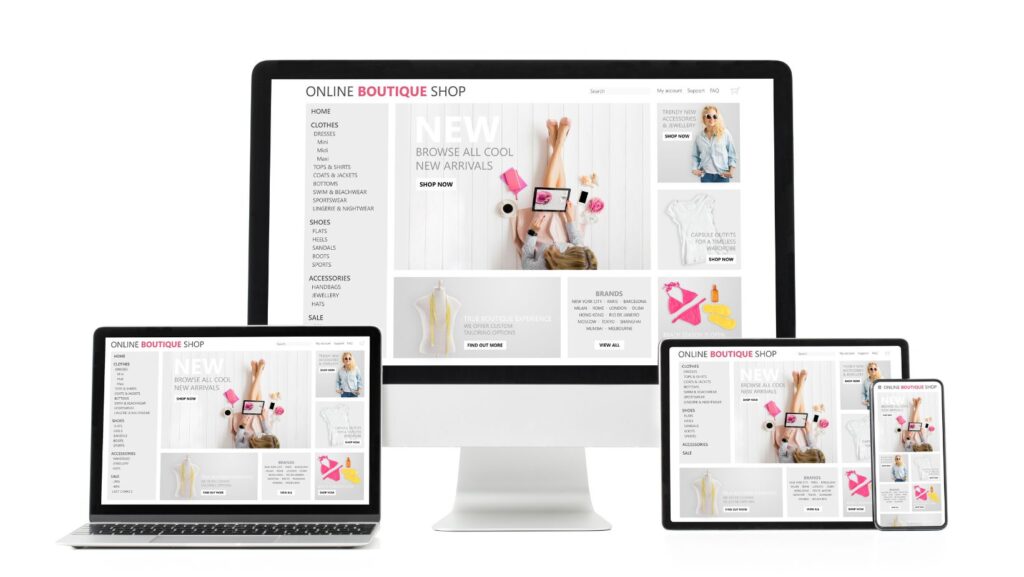
In today’s digital world, a solid online presence is crucial for the success of any business, especially a startup. A well-designed website not only attracts visitors but also converts them into loyal customers, and as a result, conversions increase. As startups often operate on a limited budget, making the most of their website is crucial to distinguishing themselves from the competition, and a fantastic website design can achieve just that. Customers will have an easier time swiftly and readily finding the appropriate information on a well-designed startup website.
Your company’s beliefs and mission should be reflected on your website to build brand recognition and customer trust. To help you build your startup website, we reached out to the experts at Alpha Efficiency for tips and advice to ensure you have what you need to start designing your site.
-
Define Your Brand Identity
Before diving into web design, startups must clearly understand their brand identity. What your business stands for, your beliefs, how you sell your products, and the feeling you want people to experience when doing business with you are what make up your brand identity. You can think of it as both the essence of your business and a promise to your customers.
Your website should convey your business’s character, mission, and values. Establish a consistent color scheme, typography, and visual elements that align with your brand identity. That cohesiveness across your website helps build brand recognition and trust among visitors.
-
Keep It Simple
In web design, simplicity is key. Avoid cluttering your website with too many features and elements, as that can overwhelm visitors and distract them from your core message. Instead, use clean layouts, ample white space, and intuitive navigation to guide users seamlessly through your website. Simplicity enhances the user experience and improves website loading times, a critical factor for retaining visitors.
-
Mobile-first Approach
With most internet users accessing websites from mobile devices and doing most tasks from their phones, a mobile-first approach is non-negotiable. Ensure your website is responsive and adapts gracefully to various screen sizes

. Mobile-friendly websites rank better in search engines and cater to a broader audience, enhancing user engagement and conversion rates.
-
Intuitive Navigation
Your website’s navigation should be user-friendly and intuitive. Organize content logically and make it easy for visitors to find what they want. Everything is fine if users can execute their duties without delay or consideration. The non-intuitive design causes disruptions; the intuitive design is invisible.
To achieve intuitive navigation, consider using a clear and concise menu structure, breadcrumb trails, and search functionality. Remember, a confused user is likely to leave your website, so prioritize smooth navigation.
-
Fast Loading Speed
In today’s fast-paced world, users have little patience for slow-loading websites. Let’s be honest: we all want everything to move smoothly and quickly and don’t have time to waste. Optimizing your website’s images, using coaching, and choosing a reliable hosting provider to ensure fast loading times are highly recommended. Google considers website speed a ranking factor, so a faster website will not only please your visitors but also enhance your search engine rankings.
-
High-quality Visuals
Images and visuals play a significant role in web design. Invest in high-quality images that resonate with your brand and complement your content. Avoid generic stock photos; use original images to add a personal touch to your website. Consider using visual elements such as infographics and videos to convey complex information engagingly.
-
Call-to-Action (CTA)
A well-designed website must have clear and strategically placed Call-to-Action buttons. Your CTAs should guide visitors toward the desired actions, such as signing up for a newsletter, purchasing, or scheduling a consultation. Use contrasting colors and compelling copy to make your CTAs stand out and encourage user interaction.
-
Testimonials and Social Proof
As a startup, building trust is a way to create honest relationships with your audience; one effective way to do that is by showcasing testimonials and social proof on your website. You can ask previous customers to leave positive reviews and testimonials on your social media websites and accounts.

That way, you can instill confidence in potential clients. Integrating social media feeds and displaying user-generated content can also establish credibility and authenticity.
-
SEO Optimization
To ensure your website gets found by your target audience, the best resource you can use is implementing Search Engine Optimization (SEO) strategies. Identify relevant keywords and incorporate them naturally into your website’s content, meta tags, and URLs. Regularly create fresh and valuable content through a blog to improve your website’s visibility in search engines and drive organic traffic.
Conclusion
A well-designed website is an invaluable asset for startups looking to establish a solid digital presence. By following these nine web design tips, startups can create a website that captures visitors’ attention and converts them into loyal customers. Remember, simplicity, mobile-friendliness, and focus on brand identity are the pillars of effective web design. Invest the time and effort to craft a website that truly represents your startup’s vision and values, and you’ll be well on your way to online success.













